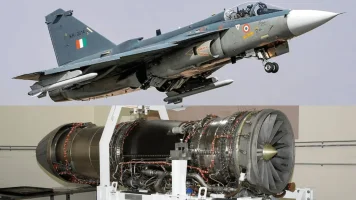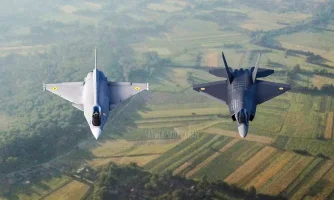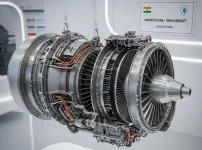- Views: 3K
- Replies: 22

Hindustan Aeronautics Limited (HAL) is setting its sights on the international defense market with "Yashas," a significantly upgraded and weaponized version of its Intermediate Jet Trainer-36 (IJT-36).
Formerly known as the HJT-36 "Sitara," the redesigned aircraft was unveiled at the Aero India 2025 show, held at the Yelahanka Air Force Station in Bengaluru from February 10-14. The airshow serves as a major event for demonstrating India's progress in the aerospace and defense sectors.
The original IJT-36 program, which began in 1999, was intended to create a domestically produced jet trainer to replace the Indian Air Force (IAF) and Indian Navy's aging HAL HJT-16 Kiran fleet.
The project encountered substantial obstacles, including issues with the aircraft's spin and departure characteristics, which caused delays and raised concerns about the program's future.
After undergoing a long period of redesigns and tests, HAL stated that they had fixed the problems. The aircraft's rebranding as "Yashas" (Sanskrit for "success" or "glory") reflects this achievement.
The rebranded aircraft was launched by the Secretary of Defence Production, Sanjeev Kumar. HAL's Chairman and Managing Director, Dr. D.K. Sunil, and other high-ranking officials were also there. Dr. Sunil highlighted that the extensive modifications made to the basic intermediate training platform have greatly improved its performance.
He further added that that these advancements justified renaming the aircraft to highlight its ongoing importance as a training platform for pilots in contemporary military aviation.
HAL is not only focusing on its role as a trainer but is also developing an armed version of the Yashas specifically for export. This export model will be capable of carrying advanced weaponry, such as the Advanced Short Range Air-to-Air Missile (ASRAAM) and rocket pods.
This will turn the aircraft into an affordable combat trainer designed for use in environments with limited air threats. This move demonstrates HAL's aim to meet the international need for cost-effective, adaptable aircraft that can be used for both training and light combat missions.
To succeed in the global arena, the Yashas will face competition. The market already features established aircraft like the Korean Aerospace Industries T-50, Leonardo M-346, and Aero Vodochody L-39NG, all of which are advanced trainers with established combat records.
According to Janes, a global open-source intelligence company specializing in defense, the light combat aircraft market is seeing a resurgence driven by the need for cost-effective air power in smaller nations and a training platform for the more advance fighter jets for bigger nations. To stand out, HAL will need to promote the Yashas's affordability, potential for customization, and comprehensive after-sales support.
The Yashas boasts several key improvements. These include a modern "glass cockpit" with multi-function displays (MFDs) and a heads-up display (HUD) which improves the pilot's situational awareness.
It is powered by a Russian-made AL-55I jet engine, controlled by a Full Authority Digital Engine Control (FADEC) system, providing efficient thrust management and increased reliability.
The aircraft also sports enhanced visibility for instructor pilot and student with stepped up rear cockpit and drooped nose and better aerodynamic design.
Moreover, the Yashas incorporates a greater number of Indian-made Line Replaceable Units (LRUs), reducing reliance on foreign components and boosting India's self-sufficiency in defense production.
The aircraft is capable for stage II pilot training. Beside this, the aircraft has operational versatility of supporting aerobatics, armament training, counter-insurgency operations and counter-surface force missions. It can carry a payload of up to 1,000 kg.



